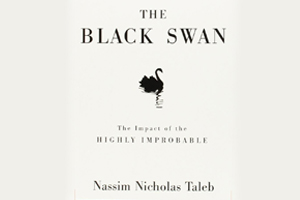John Mihaljevic’s book, The Manual of Ideas: The Proven Framework for Finding the Best Value Investments, describes the nine tried-and-tested strategies for value investing. The book also provides details on why each strategy is expected to work with John portraying the approach, highlighting how it can be used and misused, and providing guidance on how to identify specific investment opportunities for each alternative. The book is a veritable guide for new investors looking to adopt the value investing approach as well as for more experienced value investors looking for a critical analysis of proven strategies and ideas.
Key Takeaways
- In investing, while it is difficult to succeed as an original, it is almost impossible to succeed as a copycat.
- Those considering an investment in a hedge fund must first convince themselves that their perspective manager can beat Warren Buffett. Otherwise, it is better to invest in Berkshire at a good price.
- Thinking like a capital allocator is quite similar to thinking like an owner. Investors who consider themselves as owners of the company, rather than traders, look to the business, rather than the market, for return on investment.
- The best investment is in those companies that have a strong balance sheet or earnings power and are available at good prices.
- Companies with varied components of value usually have greater strategic flexibility. They have the capability of divesting a fairly valued asset to enhance the balance sheet, repurchase undervalued shares, or reinvest capital in a high-yield business.
- The best investors exhibit common traits including clear thinking, transparent communication, a strong passion for the investment process, a humble attitude towards success, and the distinction of having superior investment returns.
Value investing as a highly personal endeavour
While investing in a stock or company, investors who consider themselves owners of the company, rather than mere traders, look towards the business for returns on their investment rather than expecting yields from the market. When company valuations are rising you should ask yourself a simple question - what else could you purchase with the same amount of money? This will help you identify the true value of the investment from the perspective of your personal portfolio. As a value investor, you should aim for a model that boils all companies down to the same valuation - equity value. You can then compare the company's equity value with market value and accordingly make an informed investment decision. While creating a framework for selecting stocks, focus on two important points – ensure that the framework is flexible enough to permit the analysis of any stock, regardless of industry or company size and make it robust enough so that it can support you in making informed investment decisions.
Deep value - Ben Graham style bargains
Value investors should aim for Benjamin Graham’s net nets concept: invest inthose companies that are being offered at a price lower than the value of its current assets after all liabilities have been paid. When looking for value stocks to build your portfolio, try to identify stocks with a Price/Book Value (P/BV) well below 1. Once these stocks have been identified then shortlist them further according to thenet nets concept. This will ensure that you purchase strong stocks at relatively lower valuations.
Sum-of-the-Parts value and investing in companies with hidden or excess assets
Value investors should act like detectives. Thus, instead of simply accepting what the management is saying about the company, you should investigate the worth of all its assets and business components. Companies that have several distinct components can also have several sources of value. For example, a company with several units can divest the unit at a fair price to improve the balance sheet, repurchase undervalued shares, or reinvest the capital in a high-return business. However, there is no simple way of screening for such opportunities. The only way of discovering such hidden value is through in-depth analysis of company annual. It is important to note that such companies are often found in the retail and hospitality industry since such enterprises usually have large real estate positions that could end up being undervalued in the balance sheet.
Greenblatt’s magic companies and the search for good and bad stocks
In his interesting book titledThe Little Book that Beats the Market, American hedge fund manager and investor Joel Greenblatt, founder of Gotham Funds, describes how investors can spot the sweetest combination of stocks. These are stocks that offer above-average business at below-average prices. You should look for enterprise stocks trading at low Price/Earning (P/E) ratios while providing a high return on capital. This, according to Greenblatt, is themagic formulafor finding good stocks at reasonable valuations. The only way you can generate market-beating returns is by buying good companies at a cheap price.
Jockey stocks and how to make money in tandem with great managers
The jockey stocks strategy revolves around identifying great managers, or jockeys, and then following their lead. You should look for managers who can add value by either enhancing the performance of the operation or allocating capital intelligently. Finding managers who can do both is very rare. For instance, Steve Jobs was a CEO who was capable of adding value to his company by driving innovation as well as profits. However, he was unable to completely grasp the concept of capital allocation. While it is not easy to screen for good managers, investors can depend on the following factors to narrow down their search - look for managers who have ensured a high return on capital, contributed to an increase in employed capital per stock, caused significant improvements in margins, and intelligently managed costs and assets. Also, you should look for CEOs or managers who are underappreciated as these individuals are usually soft-spoken and non-promotional. Humility and conservatism are two qualities that can speak volumes about a good manager. You should screen for a manager who believes that results should speak for themselves.
Finding opportunity in super-investor portfolios by following the leaders
You can also enhance your chances of striking big by trying to spot super investors with whom you share an investment philosophy. Once you spot such investors, you can track their trades. Some common qualities of top investors include a focus on process, seeking odds in their favour, and understanding the important role played by time in increasing the value of investments. The single biggest error in investing is, usually, overconfidence.
As Guy Spier states, "giving credit to others never diminishes ourselves, in fact, it usually enhances our standing". In this case, investors who are interested in passively following a super investor's portfolio can also choose to allocate some capital in that investor's investment vehicle or fund offering.
It is also important to identify and understand the reason behind a particular investment. This means that you cannot just blindly follow super investors. Instead, you should do your own homework, analyse the companies owned by super investors, and ensure that you agree with their investment rationale. Additionally, it is better to develop a tracking portfolio of several super investors, instead of sticking to only one person. Some of the popular super investors include Warren Buffett, Mohnish Pabrai, and Seth Klarman.
The opportunity prevalent in underfollowed small- and micro-caps
Every investor out there is aware of the major large-cap companies. These companies are covered by nearly every analyst on the street and traded at high volumes. However, the smaller indices that comprise small-caps and micro-caps rarely receive the same widespread coverage, opening up opportunities for discerning value investors. These stocks, if discovered at the right price and held for a longer period of time, can potentially generate exponential returns. The key lies in these underfollowed stocks eventually getting discovered by the analyst community and therefore, investors.
Decoding opportunity in event-driven investments and special situations
Astute investment requires a good eye for finding value in special situations and event-driven opportunities. Such opportunities include crises-stricken companies, bankruptcies, debt restructurings, massive share buy backs, turn-around situations, spin-offs, experimental short-term initiatives, etc. While it is not possible to be aware of all the events occurring in a vast market, you can screen for sudden movements on otherwise stable price charts, large drops in outstanding shares, and acquisitions. While such tracking could require great attention to detail, it might be easier to track popular media and follow the blogs written by leading investors who specialise in such situations.
Some sources of such market opportunities, which you can track for potential profit include end-of-year tax selling, dividend cancellation, spin-offs, distressed sellers, rights offerings, high fear factor, and valuable intangibles, among others.
Speculation and investment in leveraged companies
You should look for opportunities which come about through stocks that are sold at greatly reduced prices due to financial difficulties. However, you must exercise great caution while practicing this strategy as it often involves acquiring stocks in highly leveraged companies. In such situations, you will either fail miserably or triumph spectacularly. Some of these equity investments can offer exponential returns because fearful investors avoid such stocks at all costs, effectively causing the pricing mechanism to break down and offer you higher yield. From a quantitative metrics perspective, you can create a screener using the following criteria: a debt/equity ratio above 2-3, high debt relative to EBITDA, and large drops in stock prices.
Searching for value beyond home country borders
According to Sir John Templeton, “investors should see the investment world as an ocean and buy where you get the most value for your money.” You can find value in international investments as well. You should not be concerned about where the company is geographically located, but about finding the right qualities that make it a good investment for your portfolio. Most investors usually stick to developed markets like the US and UK, which are already highly leveraged. It is important to search for international investment opportunities to boost portfolio returns. You should focus on asking the right questions when it comes to finding the appropriate international investment opportunity - how global is the business, what is the right concentration, and what comprises the company's ROE.
If you are a value investor then the 9 strategies outlined in the book can help you smoothen your financial journey and potentially achieve your financial goals. However, nothing is ever as easy as it looks. Some of these strategies are complicated and require in-depth knowledge about finance and investments while others can be fairly time consuming. If you want to adopt the value investment approach but do not have the time or inclination to follow these strategies then a simple solution for you could be mutual funds. These are investment vehicles that invest across investment asset classes like equity, debt, gold, etc., and follow a pre-defined investment approach. There are several mutual fund schemes that follow one or more of the strategies outlined by John Mihaljevic in this book. For example, there are equity mutual fund schemes that only invest in companies that promise future growth and are currently available at a reasonable price. Then there could be schemes that focus on special situations and distressed securities. Further, there are also mutual fund schemes that invest in international markets either directly or through foreign funds, thereby providing you with the required international exposure. In a nutshell, mutual funds offer a variety of investment options, many of which adhere to the above nine strategies. Thus, they can be a good investment option for a value investor.
An investor education initiative
All Mutual Fund Investors have to go through a onetime KYC process. Investor should deal only with
Registered Mutual Fund (RMF). For more info on KYC, RMF and procedure to lodge/redress any complaints –please visit on https://www.edelweissmf.com/kyc-norms
Mutual Fund Investments are subject to market risks, read all scheme related documents carefully.
Trending Books
MUTUAL FUND INVESTMENTS ARE SUBJECT TO MARKET RISKS, READ ALL SCHEME RELATED DOCUMENTS CAREFULLY.













